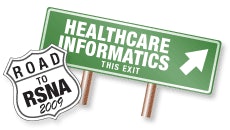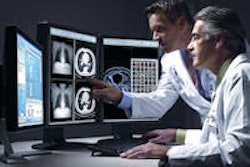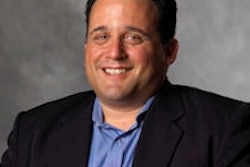Surprise, surprise! During a year in which the U.S. is obsessed with the topic of healthcare informatics, and the federal government is finally addressing the need to push medical information management into the 21st century, the subject will have a surprisingly low profile at RSNA 2009.
This doesn't mean it's unimportant. Healthcare informatics provides the backbone for healthcare reform and improvement, and the radiology profession has been at the forefront of the digital revolution. At most hospitals and enterprise healthcare networks, RIS and PACS have been in use far longer than the electronic medical record systems with which they are finally now being integrated.
At RSNA 2009, the trend among healthcare informatics presentations looks to center on applications -- the harnessing of informatics to make better medical decisions and to improve quality assurance programs and reduce mistakes, which will positively affect patient safety. Healthcare informatics can automate processes that would be unthinkable if manually performed, enabling clinicians to work smarter and more efficiently.
In the scientific sessions, emphasis will be placed on better utilization of evidence-based medicine, such as by using computerized radiology exam ordering systems. Critical results reporting can be tracked and quantified, as can physician response to radiologists' recommendations suggesting additional diagnostic imaging procedures. Critical results can be corroborated with the diagnostic tests performed for the assessment of their relevancy and value.

And now that speech recognition dictation technology has been adopted by many radiology departments and practices committed to improving report turnaround time, is structured reporting ready for prime time? This is a controversial subject, but RSNA is betting that it is ready in its initiative to provide gold-standard report templates prepared by members of its subspecialty committees. As a subject, structured reporting will be prominent this year.
Refresher courses
In addition to scientific sessions, we'd like to emphasize two special focus sessions and a bevy of informatics refresher courses.
"An important goal of the informatics refresher course program is demonstrating how informatics can help the practicing radiologist to improve clinical practice and enhance learning," Dr. John Eng, associate professor of radiology and health sciences informatics at Johns Hopkins University School of Medicine and chair of the RSNA informatics refresher course program.
These courses are offered outside the usual refresher course times, but what is new this year is that time slots have been standardized to fit better into the schedules of meeting attendees.
The informatics refresher course program includes four tracks specific to informatics. Results and Reporting (Informatics in Practice) contains courses related to topics that arise in daily practice (Thursday, December 3, 4:30 p.m.-6:00 p.m., RC726, Room S102D). A new course of particular interest, developed in conjunction with the Society for Imaging Informatics in Medicine (SIIM), is on communicating results.
A must-attend refresher course focuses on using information technology to improve quality and safety (Monday, November 30, 8:30 a.m.-10:00 a.m., RC230, Room S404CD). This focuses on identification of data for measuring, data mining, and developing prospective quality and safety issues. Another course will discuss utilizing standard terminology to improve radiology practices (Tuesday, December 1, 4:30 p.m.-6:00 p.m., RC430, Room S403A).
Special focus sessions
Special focus sessions are intended to be controversial and generate debate. Two are noteworthy.
Structured Reporting: How Much Structure Is Enough? (Wednesday, December 2, 4:30 p.m.-6:00 p.m., SFN05, Room S502AB) will be moderated by Dr. Curtis Langlotz, Ph.D., vice chair for informatics and medical director for information services of the radiology department at the Hospital of the University of Pennsylvania, and by Dr. Charles Kahn Jr., professor of radiology and chief of the division of informatics of the Medical College of Wisconsin in Milwaukee.
"It's not a question of if radiologists will be using structured reporting templates, it's a question of when. As a result of its initiatives over the past two years, the RSNA will be releasing a database of more than 50 templates representing best-practice reporting in 12 specialties," Langlotz said.
He compared structured reporting to the conundrum of which came first, the chicken or the egg, noting that vendors haven't yet created good, usable software to create structured reporting templates, but also that radiologists haven't thought at any length about what kinds of templates to use in the system. The special focus session will include a debate about whether pay-for-performance initiatives may drive the adoption of structured reporting.
Computerized Physician Order Entry: Advances and Challenges (Thursday, December 3, 3:00 p.m.-4:00 p.m., SFS06, Room S502AB) will be moderated by Dr. Chris Sistrom, chief information officer of the University of Florida School of Medicine's radiology department and associate chair.
These two sessions will be standouts at RSNA, and it's our guess that they will be standing room only as well. Don't miss them! But if you do, AuntMinnie.com will be providing coverage.
Below are highlights of some of the more intriguing healthcare informatics papers scheduled for presentation at this year's RSNA meeting. To view the RSNA's Web site listing abstracts for this year's scientific and educational programs, just click here.



















